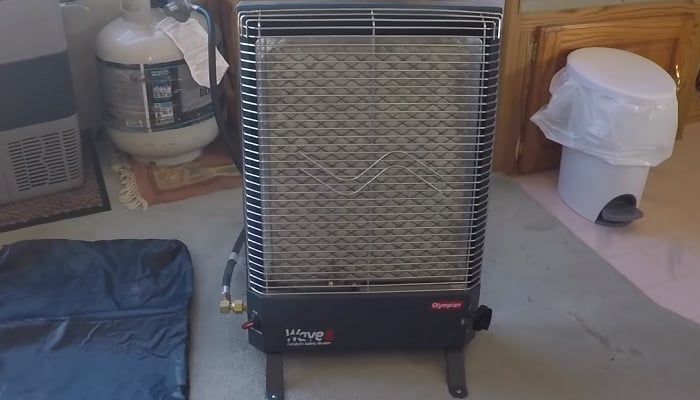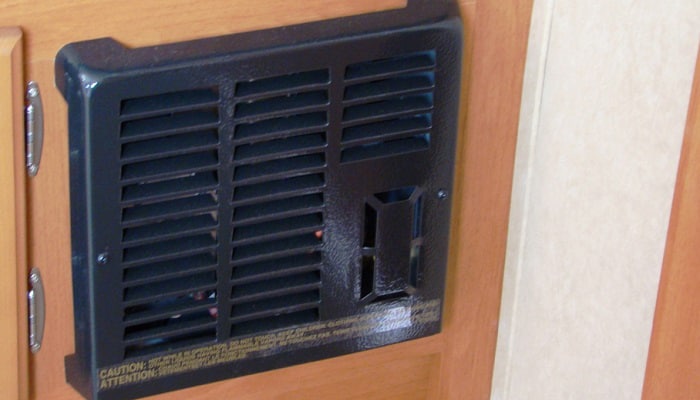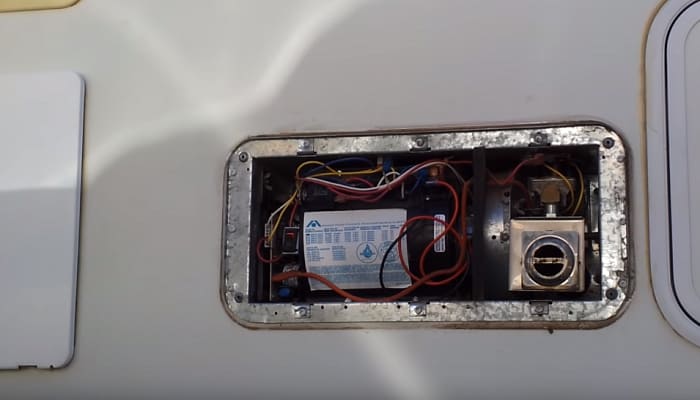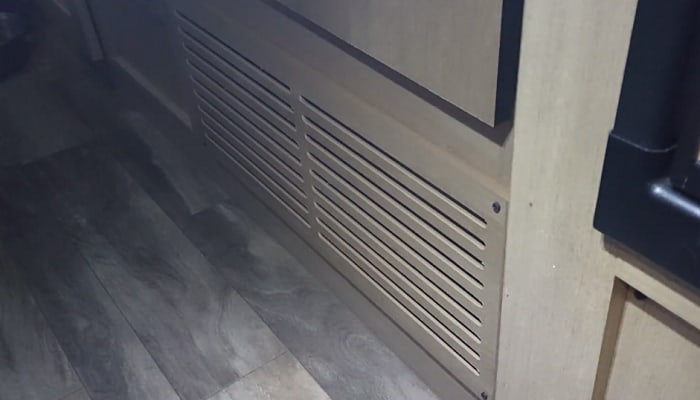Unless you are an extreme outdoorsman who likes to rough it when you go camping, you will truly appreciate having a reliable source of comfortable heat other than a campfire. If you have an RV, then you can equip it with its own furnace.
However, you should at least know how does an RV furnace work and how much propane does an RV furnace use before you purchase one. It will also be a big help if you know what to look for when you are shopping around for one.
Table of Contents
Why Do You Need an RV Furnace?
If you have an RV then you want to have the most creature comforts available when you go on your camping trips. Just because you want to experience nature does not necessarily mean you have to be cold and miserable as payment.
When you have an RV furnace, you can have a warm and cozy place to surrender to when the temperature outside gets a bit too cold for your comfort.
What Type of Furnace Do You Need?
There are generally just two types of furnaces that are designed for RVs and they are the direct discharge and the ducted-type furnaces. If you are thinking of getting one for your RV (if it did not already come with one) then you better learn as much as you can about them so you can choose the right one for your needs.
Direct Discharge Furnace – This type of furnace is usually compact and lightweight. It is also usually used in smaller and older RV models. You can expect this type of furnace to work by blowing heated air directly from the faceplate of the unit.
Ducted Furnace – This furnace type blows the heated air through ducts that run either in the ceiling or under the flooring of the RV and then released in the air conditioning vents. The benefit of this kind of furnace is that the heat is more evenly distributed throughout your RV. There are also no cold spots in the vehicle.
These furnaces also have thermostats that you can use to regulate the temperature in the RV. You can use it in bigger and more modern RV models – the ones that are so huge that one direct discharge furnace will not be able to heat them properly.
What Size of Furnace Do You Need?
If your RV came with a furnace already built-in and you just want to replace it then it would be best for you to get one that is of the same size. You should make sure that the furnace you get is compatible with your RV. Other than the physical size of the furnace, you also have to take into consideration the output capacity of the furnace in question.
Bigger is not always better when it comes to furnaces. If you get a furnace that does not have enough output capacity then it would stay on longer than necessary. Also, if you get one that has a capacity that is too big then it will cycle on and off too often. Both choices are inefficient. You should get a furnace that is sized appropriately for your RV.
The Basics of How RV Furnaces Work
If you are just a starting in the RV world, then here are a few things that you need to know about your RV’s furnace:
The furnace in your RV runs on the vehicle’s 12v system – This means it does not need to be plugged into a 120v outlet to work.
If the thermostat in your RV only controls the furnace, it will only have an ON switch – You will need to toggle this switch if you want it to operate. However, if your thermostat controls both the furnace and the A/C, make sure that the switch is set to FURNACE.
If you set the thermostat to “warm”, the furnace’s blower should turn on after ten seconds or so.
The blower will run for around thirty seconds and then its burner will fire up – It is also only normal for the burner to cycle on and off a couple of times. Once the temperature you desire is reached, the burner will then cut off, but the blower will still continue functioning.
Troubleshooting Common Furnace Problems
It is also crucial to know about a few problems in your furnace that will eventually show up. The good news is that some of the common furnace issues are fixable by yourself. However, for the highly technical stuff, you should get a professional RV HVAC repair service to help. Here are some common problems you have to take note of:
The pilot light won’t light and stay lit – In this case, it helps to make sure that the furnace’s thermocouple is in the right position in front of the pilot flame. Another reason why this happens is that your propane tank has a faulty regulator. To test if this is the case, you need to ignite all of the burners on the RV’s stove and then observe the color of the flames.
Ideally, the flames should be blue with a bit of yellow or preferably none at all. If the color remains unchanged after a couple of minutes then your regulator is still fine. However, if the flame turns into a bright yellow, then you need to have your regulator replaced.
If you find that the regulator is faulty, you should replace it immediately. Do not try to repair the regulator or have it repaired. Propane regulators are fairly affordable and it would be better if you were to use a brand new one instead of a refurbished one.
The furnace blower isn’t running and there is no heat – If the fan is not running and there is no heat coming from the furnace, there might be an electrical problem. Check if your RV batteries still have enough charge in them and if they can still produce a steady 12v. If the batteries are still good, you might have a blown fuse or a tripped circuit breaker.
Check your utility box and find out if it needs replacement. If the batteries are good and the fuses are all in perfect condition, you need to check the thermostat next. Remove the cover of the thermostat and look for an adjustment control labeled as “anticipator”. If the furnace’s fan will not start, turn the thermostat to the maximum setting.
You should then move the anticipator slider. Stop only when you hear the fan starting. You need to be patient as the fan usually takes around thirty seconds before the thermostat sends a signal to the fan to start.
If the fan starts when you move the slider, then that might be the problem. You just need to find a new position for the anticipator that is still relatively near its original position.
The fan runs but there is no heat – If the fan starts then you can assume that the thermostat is working properly. The possible problems, therefore, might be insufficient airflow, a faulty propane valve, or a faulty regulator.
RV furnaces have an internal sail switch. When it senses that there is insufficient airflow, the switch will stop the furnace from igniting. If your fan is still running but it does not produce enough airflow, the sail switch will still not trip.
The reason for slow fan speed might be caused by a low battery charge or other causes of low voltage such as a bad wiring connection. Another reason for low airflow is a restriction in the ventilation system (if your RV is using a duct system). You should check if any of the heat registers are accidentally closed or blocked by dust or debris.
Certain furnace models will restrict airflow even if the heat registers are just partially closed. If your furnace uses an electronic ignition instead of a pilot light, check the contacts if they are too far apart. Ideally, for a spark to jump between the contacts, they should be around 1/8 of an inch apart.
If you are aware of the common issues that come with RV furnaces then you will know what to do when they happen while you are in the middle of your camping trip. You do not have to suffer in the cold. You can now fix the issues and stay warm and cozy inside your heated RV.
Conclusion
The furnace in your RV is quite similar to the one that you have at home, albeit much smaller and does not have the same heating capacity. If you are a new RVer, it would greatly benefit you if you know how does an RV furnace work, mainly because you can use that knowledge to fix it if it ever goes on the fritz while you are in the middle of your camping trip.
Rather than starting a fire and sleeping outside your RV, or worse, driving back home because you cannot stand the cold, it is better if you know the basics of how a furnace works so that you can fix it.
Knowing the basics of furnaces will allow you to identify the main problem just by tracing back from the symptoms. Most of the time, the reason why your furnace suddenly stopped working is rather small and trivial in the sense that you can fix it yourself.

Hi, I am Tom Hank, an RV-er since 2014. Back then, I started without much help. As you can imagine, the struggles are endless. But now, you do not have to begin your adventures knowing next to nothing about RV lives.





